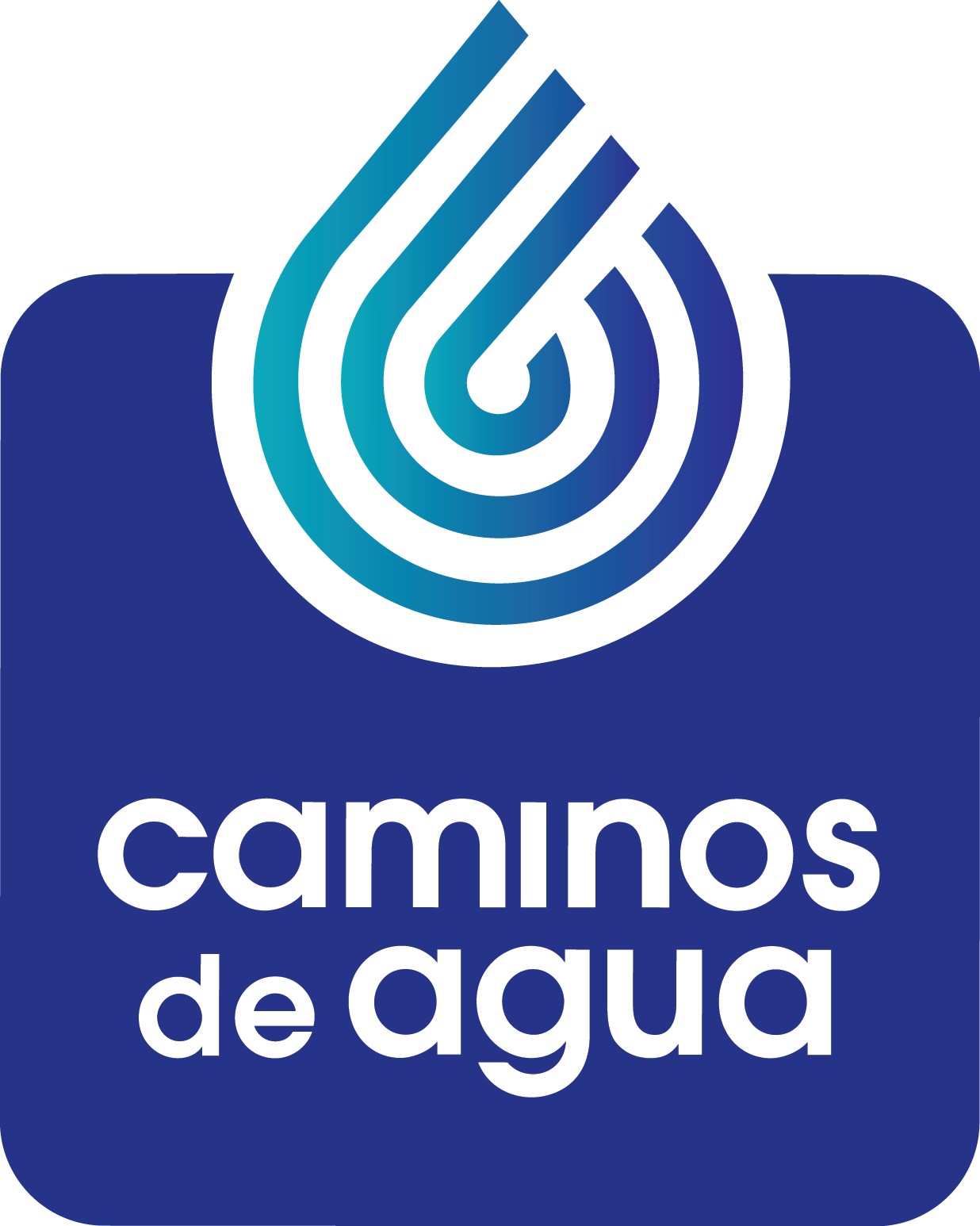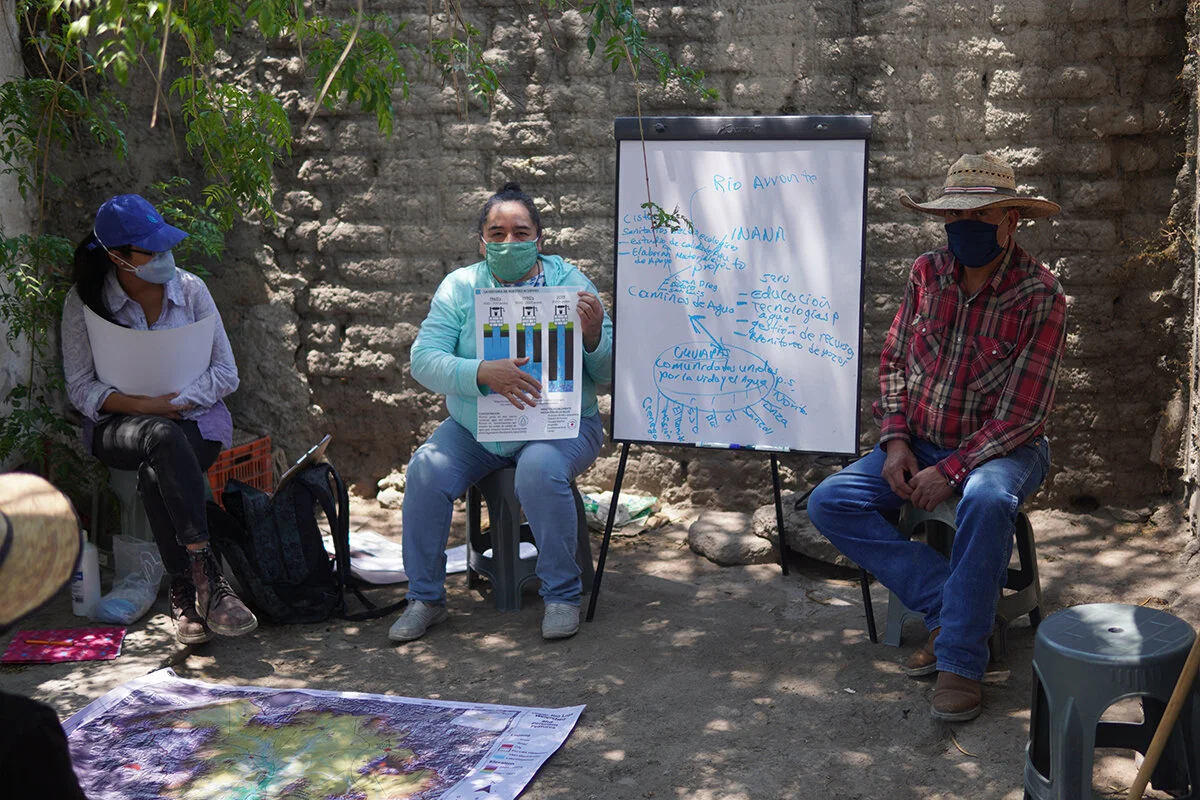The Impact of Agriculture on Our Water Supplies
Photo: El Fraile, a rural community near San Luis de la Paz, has irrigated fields like those pictured above next to rural households that have no access to clean drinking water.
What is the Problem?
By Romeo Robles
The Upper Río Laja Watershed stretches across seven municipalities in northern Guanajuato State in central Mexico. Nearly all of the water consumed in this region comes from the aquifer – a large underground reservoir that serves more than 2,800 rural and urban communities – including all of San Miguel de Allende – providing life-sustaining water to more than 680,000 people. The aquifer is declining at an alarming rate. Wells are going dry, and the water that remains may contain 12 times or more the World Health Organization recommended limits for arsenic and fluoride – known to cause unsightly dental fluorosis, painful skeletal fluorosis, cognitive developmental and learning disabilities in children, and several types of cancer among longer-term water consumers.
The cause of this crisis is unsustainable over-extraction of our groundwater resources, mainly for large-scale agriculture production, forcing wells ever deeper into mineral-rich “fossil water,” which is often contaminated with naturally-occurring arsenic and fluoride. With the introduction of export-oriented agricultural policies, unsustainable overexploitation of our groundwater has driven the water table down from a couple dozen meters in the 1950s to more than 200 meters (~650 feet) in recent years. Today, wells regularly exceed 500 meters (~1,650 feet) in depth as the groundwater levels continue to drop by a staggering 2-3 meters (6-10 feet) per year.
Photo: A local community leader from El Fraile, a rural community in San Miguel de Allende, watches his tractor go unused due to the community's well drying up.
Roughly 85% of water pumped from the aquifer goes to agriculture. Water-intensive crops like broccoli, alfalfa, and lettuce are almost exclusively bound for foreign markets in the US, Canada, and elsewhere. We are literally exporting our finite water supply, and the expansion of the prosperous agricultural-exporting industry, compounded by inadequate water regulation and management, is the culprit.
Photo: Lucha, from CUVAPAS, a grassroots partner organization talking to community members ) about the increasing well depths in the past decades.
Land and Water Policy in Mexico
In Mexico, land and underground resources, including water, have been property of the nation since the Constitution of 1917 at the end of the Mexican Revolution. The Constitution promoted the redistribution of land, formerly concentrated in the hands of a few hacendados or landowning elites, international landowners, and other private interests, in favor of the Mexican peasantry. The mechanism is still known today as the ejidos, a type of collectively-owned land.
By 2012, Mexico recognized the human right to water by signing a constitutional amendment guaranteeing everyone in the country access to water for personal consumption in a manner that is “sufficient, safe, acceptable, and affordable.” Despite these safeguards, Mexico has a long way to go. The inequitable distribution of water resources, and their irresponsible exploitation by a few powerful actors, continues to leave many people behind, scavenging for a few drops in the dust.
The “Ostrich Politics of Groundwater:” Water Management in Guanajuato
With the advent of tubewell technology, various actors began sinking wells in Guanajuato as early as the 1940s. By 1948 there were already signs of severe overexploitation, leading to the establishment of the first veda, or “prohibited area.” In regions under veda, the drilling of new wells was strictly forbidden without prior approval from the National Water Authority (CONAGUA). By 1983, the entire state of Guanjuato was placed under veda. It was already clear then – nearly four decades ago – that we were over-extracting the aquifers and this finite water resource was dwindling.
Photo: A modern groundwater irrigated field in the community of El Fraile, near San Miguel.
The vedas were largely ignored or easily circumvented and, despite these prohibitions, according to Dr. Jaime Hoogesteger (a long-term advisor to Caminos) the number of drilled wells in the state rose from 100 in the 1940s to 2,000 in 1960. By 1982, more than 10,000 wells were drilled, and, today, there are estimated to be more than 20,000 wells in the State of Guanajuato. According to the State Water Commission of Guanajuato, groundwater extraction reached 4,000 Mm3/y (million cubic meters per year) by 2016. However, the recharge rate is only around 3,000 Mm3/y – meaning we are extracting at least 25% more groundwater from the aquifers every year than gets refilled naturally by rainfall.
While some of this boom can be attributed to urban expansion and even modernizing the rural agricultural production system of the ejidos, the vast majority of groundwater extraction can be placed squarely on the commercial interests of mid to large-scale agricultural producers.
This rampant disregard to sustainably manage and preserve our most important resource is what Hoogesteger calls the “ostrich politics of groundwater:”
“Politicians, bureaucrats, private companies and powerful users all act alike -just like ostriches-, they tend to bury their heads in the sand and ignore the obvious signs and consequences of sustained intensive groundwater use on the environment, the rural poor and future generations[…]"
The Consequences
Groundwater decline has pushed many who once worked the ejidos (ejiditarios) out of production, and forced a large part of the rural population to migrate to both Mexican and US cities, radically transforming the social and economic fabric of rural communities. In this race to the bottom of our aquifers, rural communities, as well as the quality and availability of water in urban centers, have been increasingly impacted, leaving behind dire environmental, health, and water accessibility issues. As the water table continues to decline, more wells will go dry and arsenic and fluoride concentrations will continue to rise, imperiling the health of hundreds of thousands.
Pulling our Heads Out of the Sand
Photo: Ana, Caminos de Agua’s Community Organizer, talking to members of the community of Misión de Chichimecas before taking a water sample from their well.
Monitoring the problem and creating solutions, educational programming, and community-implementation models that we do in Caminos de Agua are incredibly important factors to help solve the underlying issues for so many. Further, we adamantly believe this work is more crucial now than ever before as there are far too many people suffering the consequences of diminishing and contaminated water supplies today, who simply do not have the luxury to wait for the long-term political solutions.
However, the root causes of this region’s incredibly complex water crisis requires true systemic change – far more than we alone can offer as a small NGO. Political will and multi-institutional collaboration are greatly needed to create programs and coherent water policies to both heal and then safeguard our finite water resources for the future. We must look to restore our watersheds, increase groundwater infiltration, promote reforestation, and push citizens and industry alike to invest in water conservation and capture for the good of all. But, most of all, we must find ways to limit the consumption of the major water abusers, and it all starts with agriculture.
Want more La Gota?
Our last issue of La Gota covered our Groundwater Treatment System, a system capable of removing fluoride and arsenic from groundwater. Next month’s issue will look at the different ways for filtering Arsenic and Fluoride available in the market.
Learn more and read past issues of La Gota at:
www.caminosdeagua.org/en/la-gota






